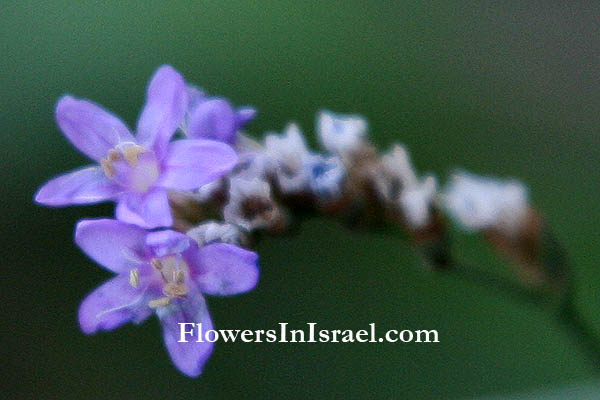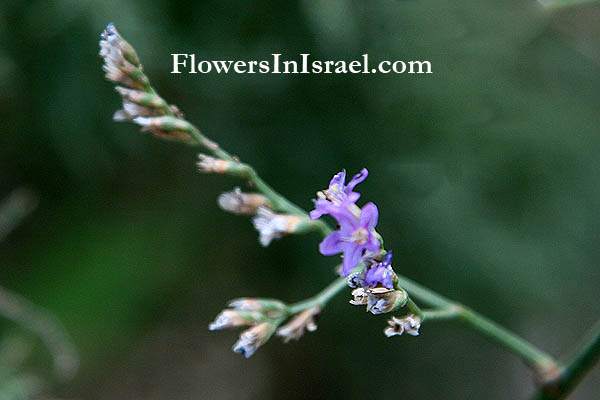Limonium vulgare, Statice limonium, Swamp sea-lavender,
Hebrew: עדעד הביצות, Arabic: البهمن
| Scientific name: | Limonium narbonense Miller | |
| Synonym name: | Limonium angustifolium (Tausch) Turrill, Limonium meyeriBoiss.) Kuntze, Limonium vulgare auct. non Miller, Statice limonium L. | |
| Common name: | Swamp sea-lavender | |
| Hebrew name: | עדעד הביצות | |
| Arabic name: | البهمن | |
| Family: | Plumbaginaceae, עפריתיים |

|
| Life form: | Hemicryptophyte | |
| Stems: | 30-50 cm high; flower stalks up to 100 cm | |
| Leaves: | Alternate, rosette, entire; red, spine-like but soft distal part of leaves | |
| Inflorescence: | A dense and big panicle | |
| Flowers: | Purple; 5 petls | |
| Fruits / pods: | Achenes | |
| Flowering Period: | April, May, June, July, August | |
| Habitat: | Salty habitats, Mediterranean strand | |
| Distribution: | Mediterranean Woodlands and Shrublands, Semi-steppe shrublands, Shrub-steppes, Deserts and extreme deserts | |
| Chorotype: | Med - Irano-Turanian | |
| Summer shedding: | Perennating |

Derivation of the botanical name: Limonium, Greek leimon, a meadow; in allusion to the common habitat in salt meadows. narbonense, Narbonne, South France. angustifolium, having narrow leaves. meyeri, for Carl Anton von Meyer (1795–1855), a Russian botanist and explorer. vulgare, common. Statice, Latin, an astringent plant; Greek statikos, causing to stand, astringent; Sea lavender. The Hebrew name: עדעד, ad'ad , reduplication of עד: eternity, perpetuity; probably, like עד, derived from עדה and lit. meaning ‘progress in time’. According to some scholars, however, עד is related to Arabic ghad (= morning), taken in the sense ‘late future’.
|